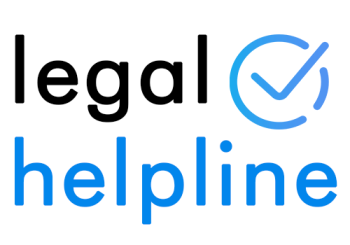In this guide, we discuss the process of making a personal injury claim for t-bone accident injuries, including the eligibility requirements that need to be met, the evidence that could be provided to support your case, and the compensation that could potentially be awarded following a successful claim.
Firstly, you will learn what personal injury settlements could include and how they are calculated. We also look at how the whiplash reforms could influence both the way you make your claim and the payout you receive. Then, we outline the eligibility requirements for starting a personal injury claim in more detail as well as look at the duty of care that road users, such as drivers, riders and pedestrians, owe to one another.
Following on from this, we offer examples of T-bone accidents and the subsequent injuries that could be sustained.
Finally, we outline how a No Win No Fee solicitor from our panel could apply their experience and knowledge to your case. Our advisors can explain this in more detail and assess your potential claim, all for free, so please don’t hesitate to either:
- Call 0333 000 0729.
- Contact us on our website.
- Start a live chat discussion in the tab below.

Select A Section
- What Is The Average Payout For T-Bone Accident Injuries?
- Am I Eligible To Make A Road Traffic Accident Claim?
- What Is A T-Bone Accident?
- What Evidence Could Support My Claim For T-Bone Accident Injuries?
- How Do I Make A No Win No Fee Claim For T-Bone Accident Injuries?
- Discover More About Claims For Road Traffic Accidents
What Is The Average Payout For T-Bone Accident Injuries?
While you may be wondering ‘What is the average payout for T-bone accident injuries?’, it can be difficult to provide an average due to the unique nature of each case. Generally, up to two heads of loss could make up a settlement following a successful car accident claim:
- General damages compensate you for the pain and suffering caused by T-bone accident injuries, physical, psychological, or both.
- Special damages focus on the financial loss brought about by injuries. By providing proof through payslips, bank statements, or receipts, you could be awarded compensation to reimburse costs such as loss of earnings from being unable to work, the cost of prescribed medicine, and travel.
Legal professionals, such as solicitors, can use medical evidence, as well as the Judicial College Guidelines (JCG), to assign value to injuries when calculating general damages. The JCG provides a list of guideline compensation brackets for various types of injuries.
Compensation Table
We have taken guideline brackets listed in the JCG to form the table below. The whiplash entries in this table are fixed figures taken from the Whiplash Injury Regulations 2021 tariff. The other entries, taken from the JCG, should only be considered a guide.
| INJURY | SEVERITY LEVEL | OTHER DETAILS | COMPENSATION |
|---|---|---|---|
| Multiple Serious Injuries | The Most Serious | Multiple serious injuries and large financial losses. | Up to £1,000,000 or more |
| Head | Moderately Severe | Very serious disabilities which might be physical, such as limb paralysis or cognitive, such as problems causing damage to intellect and personality. | £267,340 to £344,150 |
| Leg | Amputation (ii) | The below-knee amputation of both legs, with the level of award depending on factors like associated psychological issues. | £245,900 to £329,620 |
| Neck | Severe (i) | In spite of wearing a neck collar all day, the injured person has little or no neck mobility and suffers severe headaches. | In the region of £181,020 |
| Arm | Severe | Injuries that do not result in amputation but are serious enough that the injured person is barely better off. | £117,360 to £159,770 |
| Back | Severe (ii) | This bracket considers injuries with special features, like nerve root damage with a loss of sensation. | £90,510 to £107,910 |
| Facial Disfigurement | Less Severe Scarring | Substantial disfigurement, coupled with a significant mental impact. | £21,920 to £59,090 |
| Pelvis And Hip | Moderate (ii) | Injuries that necessitate hip replacement or similar surgery, or might make such surgery necessary in the foreseeable future. | £15,370 to £32,450 |
| Whiplash | One whiplash injury or multiple alongside one psychological injury or multiple | Lasting between 18-24 months. | £4,345 |
| One whiplash injury or multiple | Lasting between 15-18 months. | £4,215 |
Whiplash Reform Programme
Changes to the road traffic accident compensation claim process brought about by the Whiplash Reform Programme mean the following:
- Adult drivers and passengers of vehicles with injuries valued at £5,000 or less, must make their claim in a different way.
- Whiplash injuries are valued in line with the tariff outlined in the Regulations 2021, as mentioned above.
If the total value of the claim comes to over £5,000, the claim will be made in the traditional way. However, whiplash-related injuries will still have a value assigned to them by the tariff. If there are any injuries sustained that cannot be found in the tariff, these will be valued in the normal way.
For further guidance on compensation for successful car accident claims and how the whiplash reforms could influence both how you seek compensation and how your settlement is valued, get in touch via the number at the top of the page.
Am I Eligible To Make A Road Traffic Accident Claim?
Road users owe a duty of care to each other. This means that they must navigate roads safely and in a way that prevents injury or damage to one another. To uphold their duty of care, road users must follow the rules and regulations set out in the Road Traffic Act 1988 and the Highway Code.
If another road user has breached their duty of care, and this has caused you harm, you might wonder when you could be eligible to seek personal injury compensation for T-bone accident injuries.
In order to be eligible to make a personal injury claim, you must prove:
- Another road user owed you a duty of care.
- They breached their duty.
- This led to an accident, causing you physical and/or mental harm.
These criteria form the definition of negligence in tort law.
You must also consider how long after a car accident you have to claim compensation. The Limitation Act 1980 sets a three-year limit for beginning a personal injury claim, starting from the accident date. There are a small number of exceptions that could change the limit. If you’re unsure what limitation applies to you, give us a call and let us know about your situation.
What Is A T-Bone Accident?
A T-bone accident involves the front of a vehicle striking the side of another, so they form a ‘T’ shape upon impact. An incident might occur in any place where vehicles travel across each other’s path, such as a junction.
These examples give an insight into injuries that could be suffered in a T-bone collision.
- You are travelling around a roundabout when another driver enters without checking if it’s safe. They collide with you, causing a whiplash injury and a broken hip.
- You are driving down a busy street when someone comes out of a side road at speed. They hit you, and the impact causes a bad back injury and lacerations from broken windshield glass.
- A driver ignores a give-way sign and strikes you at a junction when you have the right of way. You suffer a serious neck injury, with associated nerve damage causing lasting harm.
- You are on the motorway when a lorry tries to cut across lanes suddenly to get to an exit. They strike your car, causing it to roll. The damage causes a severe head injury and paralysis.
Not all T-bone accident injuries are the result of someone breaching their duty of care, however, so it might not always be possible to claim compensation.
Talk to us if you aren’t sure whether the harm you sustained was someone else’s fault, and an advisor can let you know if you have a valid basis to make a personal injury claim.
What Evidence Could Support My Claim For T-Bone Accident Injuries?
If you have been injured in a T-bone car accident that was not your fault, you may want to be compensated for your suffering. However, for your car accident claim to be successful and to receive a compensation payout, you must prove how the third party was responsible for your injuries.
Establishing how the third party breached their duty of care, resulting in your injuries, is one of the most fundamental stages of a claims process. To make this as simple as possible, you must obtain as much evidence as you can to support your claim, such as:
- CCTV or dashcam footage of your T-bone accident
- Medical reports – these will show the injuries you sustained and the treatment you had
- Photographs – these may be from the scene of the accident or of your injuries
- Witness contact details
- Insurance details
Understandably, you may not be able to collect all of this evidence. However, our panel of solicitors may use their expertise to help you obtain all necessary and useful evidence. Once it has been collected, they may begin to review it and build your case.
If you have sustained T-bone accident injuries due to the negligent driving of another road user, get in touch with our advisors to find out if you are eligible to claim. You may even ask them any questions about obtaining evidence to prove third-party liability.
How Do I Make A No Win No Fee Claim For T-Bone Accident Injuries?
Having valid grounds to seek compensation for T-bone accident injuries could mean that a solicitor from our panel could represent your case. They could offer their services under a Conditional Fee Agreement (CFA), a type of No Win No Fee arrangement.
A CFA means that your solicitor will not ask for a fee for their services:
- In advance.
- During the case.
- If the case loses.
Should you win, the solicitor picks up a percentage of the compensation you are awarded. Due to The Conditional Fee Agreements Order 2013, a cap is applied to the proportion that can go to the solicitor.
Contact Us
You can speak to us about making a road traffic accident claim with no obligation to work with a solicitor from our panel. However, you can have your case assessed and, if you have grounds to pursue a claim, one of our panel’s solicitors could start working on your case.
It is completely free to talk with our advisors about your T-bone accident and injuries and they’re available 24/7, so please get in touch by:
- Calling 0333 000 0729.
- Going online to contact us.
- Opening the live chat pop-up and sending a message.
Discover More About Claims For Road Traffic Accidents
We have many guides to help readers understand road traffic accident claims, such as the below:
- A motorcycle accident claim calculator guide.
- Discussing cycle accident claims and when you can seek compensation.
- Looking at what to do after a HGV accident and the steps you can take.
These external sites are also useful:
- NHS – How to request your medical records from a healthcare provider.
- GOV.UK – How to seek Statutory Sick Pay if you are unable to work.
- Think! – Guidance on road safety laws.
Thank you for reading our guide to claiming for T-bone accident injuries. If you have any other questions, please contact an advisor on the number above.





